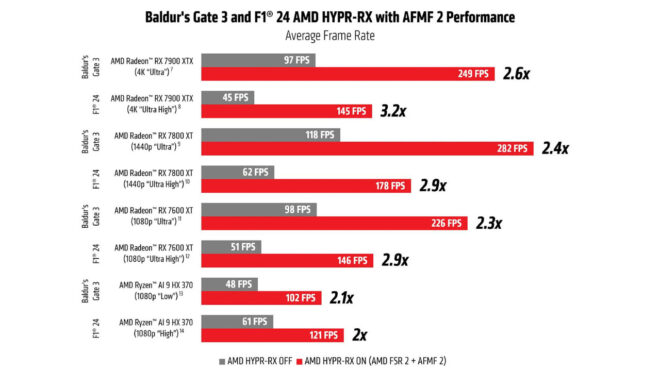Official release for AMD Fluid Motion Frames 2 technology has been made. This technology was tested in July was opened.
AMD Fluid Motions Frame 2 technology, whose technical preview version was available for download in July, can be used on AMD Radeon RX 6000, RX 7000, 700M and 800M GPUs. If you haven’t seen this technology, which has been widely released, It can bring huge fps increases in games with a single click.. First version of the technology RDNA3 It supported Radeon 700M, RX 6000 and RX 7000 series graphics cards and DirectX 11 with DirectX 12 in based games up to 97 percent It could increase performance. We provide details here “DLSS “Frame Generation” technology that works like, by creating extra images/frames during processing can often double performance. For example, a game that gets 60 fps with FSR 2 turned on can go up to 112 fps thanks to FSR 3 and Fluid Motion Frame technology. The second generation AFMF update can be enabled in OpenGL, Vulkan, DirectX 11 or DirectX 12 games. In this way, an increase in fps can be achieved in games that do not support FSR and DLSS. The technology, released with Adrenalin 24.9.1, includes optimizations for fast movements and comes with two different artificial intelligence-supported modes.
YOU MAY BE INTERESTED IN
Before this, a news focused on FSR4 had made a splash. AMD FSR4 will be completely artificial intelligence-based, according to the statement. This important information Toms Hardware It came up after an interview with Jack Huynh, general manager of AMD’s computing and graphics business group. Accordingly, developed for nearly a year FSR4 technology, It will be completely artificial intelligence-based and thus, both quality and energy efficiency will increase.
Huynh states that they are particularly focused on extending battery life with new technology. Here, portable gaming devices such as ROG Ally are placed at the center. The new FSR technology, a rival of DLSS, which processes and upgrades images at low resolution and thus brings a significant increase in fps. It seems that maximum performance will be provided by artificial intelligence on hardware with high processing power, and there is an impression that new generation hardware will be required for this.
